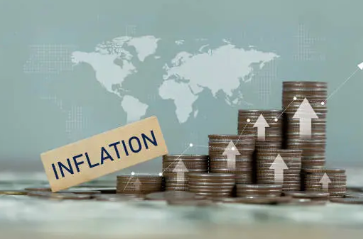Global Inflation Trends 2025: What Investors Need to Know

Global Inflation Trends 2025: What Investors Need to Know
Inflation has returned as a major force shaping global economics. After decades of low inflation, the world entered a period of high price volatility in the early 2020s. As we move through 2025, inflation continues to be a concern for central banks, consumers, and investors alike.
What Is Inflation?
Inflation refers to the rate at which the general level of prices for goods and services rises. Measured by indicators like the Consumer Price Index (CPI), inflation reduces the purchasing power of money over time.
Causes of Recent Inflation Surges
Post-Pandemic Recovery
- Supply chain disruptions.
- Pent-up consumer demand.
- Stimulus-fueled spending.
Geopolitical Conflicts
- Russia-Ukraine war impacting energy and grain prices.
- Trade tensions causing shifts in global supply chains.
Monetary Policy
- Low interest rates and quantitative easing led to excess liquidity.
- Delayed tightening by central banks allowed inflation to gain traction.
Inflation Outlook in 2025
United States
The Federal Reserve’s aggressive interest rate hikes have slowed inflation, but it remains above the 2% target. Wage growth and housing costs continue to exert upward pressure.
European Union
Persistent energy prices and labor shortages contribute to inflation. The European Central Bank (ECB) faces challenges in maintaining price stability while supporting growth.
Emerging Markets
Countries like Turkey and Argentina struggle with hyperinflation, while others (India, Brazil) aim to keep inflation under 6%.
Impact on Investors
1. Stocks
- Growth stocks typically underperform during inflationary periods.
- Value and dividend-paying stocks may offer better protection.
2. Bonds
- Inflation erodes fixed income returns.
- Inflation-linked bonds (e.g., TIPS) become more attractive.
3. Commodities
- Commodities like gold, oil, and agriculture often rise with inflation.
4. Real Estate
- Property can be a good hedge, but rising interest rates can dampen demand.
How Investors Can Protect Themselves
- Diversify across asset classes.
- Consider inflation-protected securities.
- Rebalance portfolios regularly.
- Avoid excessive leverage.
Conclusion
Inflation in 2025 remains a multifaceted challenge with both risks and opportunities for investors. Understanding regional trends, monetary policies, and asset behaviors is crucial for navigating this complex landscape. Investors who remain informed and flexible will be best positioned to thrive.




